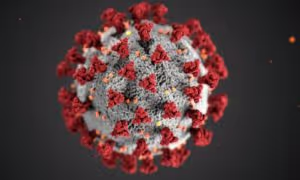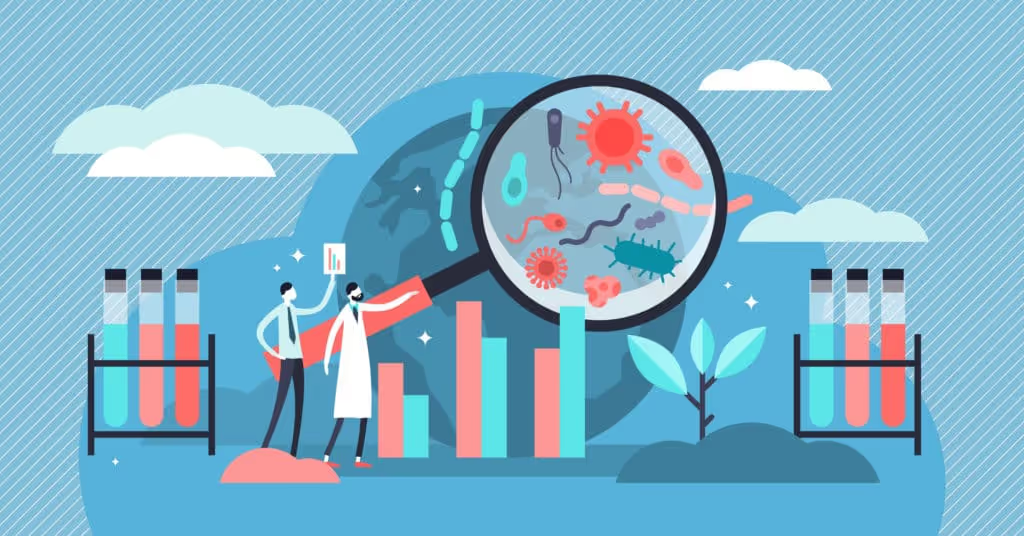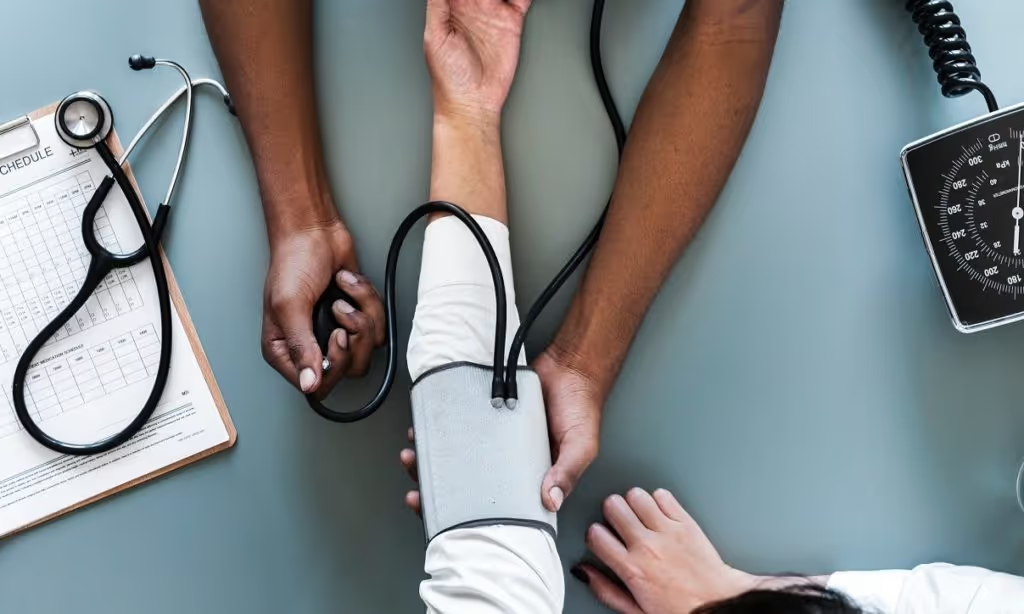[caption id="attachment_53914" align="alignright" width="300"]

CDC/Unsplash[/caption]As the novel coronavirus spreads, workers across the globe are scrambling to treat the infected, counsel the quarantined, uncover the virus’ mutations and predict its spread.Coronavirus jobs range from behind the scenes (laboratories and offices) to the front lines (quarantined cruise ships and hospitals). And the spread of the new coronavirus -- which causes the disease named “coronavirus disease 2019,” abbreviated “COVID-19” -- is shining the spotlight on the variety of and importance of public health jobs.“Public health professionals protect and promote the health of individuals, families and communities in the United States and worldwide,” Dr. Ali S. Khan, dean of the College of Public Health and professor of the Department of Epidemiology at the University of Nebraska Medical Center (UNMC), told PayScale. “The critical role of public health practitioners to protect health is front and center during this coronavirus outbreak.”Khan and his colleagues at the UNMC/Nebraska Medicine campus in Omaha, Nebraska, are indeed front and center, as UNMC’s National Quarantine Unit and Biocontainment Unit has been monitoring and caring for individuals who’ve returned from places where the virus has been spreading. And UNMC began the first clinical trial in the United States of an experimental treatment for the new coronavirus. After handling the treatment of three patients with Ebola in 2014, UNMC and Nebraska Medicine have been leading health care professionals around the world in the treatment, training and quarantine methods for highly infectious diseases.These public health experts, Khan said, are establishing national strategies and tactics to contain the outbreak, including determining travel restrictions, developing educational materials, defining guidelines for early detection, conducting laboratory testing, doing contact tracing and placing people in quarantine, and researching effective prevention and control methods.Here are some of the public health jobs that are vital in outbreaks like that of the new COVID-19 disease.
1. Epidemiologists
[caption id="attachment_53915" align="aligncenter" width="601"]

Getty Images[/caption]When disease breaks out or other threats arise, epidemiologists are on the scene to investigate, searching for the cause of the disease, identifying those at risk and figuring out how to control the spread.While they are in the middle of the action during an outbreak, they also work in offices and laboratories, usually for health departments for state and local governments, in hospitals, and at colleges and universities. The federal government’s Centers for Disease Control and Prevention (CDC) also employs epidemiologists.To work as an epidemiologist, you need at least a master’s degree from an accredited college or university. While some epidemiologists have completed a doctoral degree in epidemiology or medicine, many have a master’s degree in public health (MPH) or a related field.The average epidemiologist salary is $63,133, according to PayScale, with the highest reported salaries coming from the U.S. Army, where the average pay is $92,000.According to the U.S. Bureau of Labor Statistics (BLS), employment of epidemiologists is projected to grow 5% from 2018 to 2028 -- that’s about as fast as the average for all occupations.With the COVID-19 outbreak, the work of molecular epidemiologists has garnered particular attention. Whereas traditional epidemiologists monitor when and where sick patients show up, molecular epidemiologists track disease by monitoring the genes in the virus itself. The new coronavirus carries its genetic code in RNA rather than DNA, and because RNA viruses mutate at an especially high rate, molecular epidemiologists are busy tracking the coronavirus mutations.
2. Laboratorians
While tracking the spread of the coronavirus from the field is critical, "it’s the scientific work in these laboratories that may lead the way to a therapy or vaccine that could help save lives and fight this outbreak — or the next one," The Washington Post reports. "Studying the virus is the first step toward discovering ways to stop it: by testing potential drugs, developing animal versions of the disease and probing fundamental questions about how it makes people sick."A laboratorian is defined as one who works in a laboratory, chiefly as an aid in the diagnosis, treatment and control of disease. These workers can include clinical laboratory technologists and technicians, who collect samples and perform tests to analyze body fluids, tissue and other substances. They work in hospitals, medical and diagnostic laboratories or doctor’s offices.Technicians typically need an associate’s degree or postsecondary certificate, while clinical laboratory technologists usually need a bachelor’s degree. Additionally, some states may require technicians and technologists to be licensed. The University of Kansas Medical Center’s Department of Clinical Laboratory Sciences says that the majority of graduates sit for the national certification examination that grants the credentials of medical laboratory scientist, or MLS, and touts that laboratory scientists are in high demand, providing solid job security.For clinical laboratory technicians and technologists, the median annual salary was $52,330 in May 2018, according to the BLS.
3. Registered Nurses
[caption id="attachment_47320" align="aligncenter" width="600"]

Rawpixel/Pexels[/caption]Some of the patients quarantined on the Diamond Princess cruise ship in Japan who tested positive for novel coronavirus were taken to the state-of-the-art medical facility at UNMC, where specially trained nurses like Angela Vasa cared for them. Vasa is a nurse manager and director of quarantine services for UNMC’s National Quarantine Unit, the only federally funded quarantine unit in the U.S."The National Quarantine Unit ... is set up to provide isolation care, which means that you would be able to provide accommodation for people who have confirmed infection with a high-risk pathogen," Vasa told ABC News. She also said her training and education have helped her remain calm during her work amid infected patients.For those interested in a nursing career, there are many different pathways available. While some people choose to become registered nurses (RNs) by holding an associate’s degree first, many nurses will opt to take their bachelor’s degree in nursing (BSN). After that, they may choose to earn their master’s degree in nursing (MSN) also, allowing them to become advanced practice nurses. An associate’s degree typically takes two years to complete, and achieving a BSN degree takes four years on average. A further two years of study are required to become an MSN. Nurses also must be licensed in their state and pass a national certification exam.BSN- and MSN-trained nurses are especially important for biocontainment and quarantine. And the coronavirus outbreak is highlighting the projected nationwide nurse shortage that’s expected to intensify as baby boomers age and the need for health care grows. According to the BLS, employment of RNs is projected to grow 12% from 2018 to 2028, much faster than the average for all occupations. While the career outlook for nurses overall is high, demand for RNs with MSN degrees is expected to continue to grow. Employment for that group, including nurse practitioners, nurse midwives and nurse anesthetists is projected to grow 26% from 2018 to 2028, according to the BLS.RNs earned an average salary of $71,730 in 2018, whereas advanced practice registered nurses (APRNs) and MSN-degreed nurses in nonclinical settings earned substantially more: the median pay for nurse practitioners, nurse midwives and nurse anesthetists was $113,930 during the same period.
4. Behavioral Health Professionals
Others caring for coronavirus patients include behavioral health professionals. They help people who are isolated -- from those without symptoms but quarantined, to those who are critically ill -- deal with the psychological and emotional aspects of the experience.Dr. David Cates, director of behavioral health at Nebraska Medicine and vice-chair of clinical operations in the department of psychiatry at UNMC, told Fox42 that the stress of being quarantined can include worry about the loss of income from not being able to work. Cates said he tries to make sure these patients have a range of activities to encourage them to have contact with their outside social support.Vasa, the nurse manager at the National Quarantine Unit in Nebraska, and colleague Morgan Shradar, a clinical coordinator, told Slate that to help maintain a better mental health outcome for those in quarantine, having a structured schedule is really important. To do this, they try to provide "some semblance of a normal routine" for quarantined patients.Most behavioral health positions require at least a bachelor’s degree but can include a master’s degree. The average mental health therapist salary is $44,518, according to PayScale. But there are many types of behavioral health professionals, and demand is high. Employment for positions in behavioral and mental health is expected to grow 22% from 2018 to 2028, much faster than the average for all occupations, according to the BLS.The demand for behavioral health professionals is not limited to treating those who are quarantined or fall ill, of course. The COVID-19 outbreak is causing anxiety and stress in the public, and individuals with mental illness may be particularly vulnerable to the effects of widespread panic and threat. Mental health care is also needed for health care workers affected by the coronavirus, wrote Yu-Tao Xiang, M.D., of the University of Macau in China, and colleagues in an editorial published in Lancet Psychiatry.
5. Environmental Health Experts
[caption id="attachment_50221" align="aligncenter" width="598"]

skynesher/Getty Images[/caption]An environmental health professional or specialist works to prevent illness and promote well-being. Per the National Environmental Health Association, they do this by "identifying and evaluating environmental sources and hazardous agents" and "limiting exposures to hazardous physical, chemical, and biological agents in air, water, soil, food, and other environmental media or settings that may adversely affect human health."The CDC states on its website that “COVID-19 is a new disease and we are still learning how it spreads, the severity of illness it causes, and to what extent it may spread in the United States.” While the virus is thought to spread from human-to-human contact, it may be possible that person can get COVID-19 by touching a surface or object that has the virus on it and then touching their own mouth, nose, or possibly their eyes, “but this is not thought to be the main way the virus spreads.”Scholars writing on the role that the environment may play in the spread of the novel coronavirus report that to their knowledge there are “no specific studies of the role of humidity for coronaviruses or other respiratory viruses besides flu” and so far, there is no information on the survival and transmission of the virus that causes COVID-19 in the environment. (According to the European Centre for Disease Prevention and Control, the time of survival and the conditions affecting the virus’ viability in the environment are currently unknown.)With so much unknown, environmental health professionals are working rapidly to understand environmental factors involved in the spread of coronavirus."It's vital that we understand patterns of population movement, both within China and globally, in order to assess how this new virus might spread – domestically and internationally,” said Andrew Tatem, director of WorldPop and professor within Geography and Environmental Science at the University of Southampton, as reported in Science Daily. “By mapping these trends and identifying high-risk areas, we can help inform public health interventions, such as screenings and healthcare preparedness."The BLS projects that employment of environmental scientists and specialists will grow 8% from 2018 to 2028, faster than the average for all occupations. The median annual wage was $71,130 in May 2018.
6. Biostatisticians
Fighting the coronavirus outbreak will require a range of scientific tools, from genetic sequencing to mathematical modeling, and for all of that, researchers need data. Biostatisticians conduct statistical analyses for a wide range of biology-related topics. They can work alone or with a team. When working with a scientific team on studies’ statistical design, they can help determine the team’s needs and appropriate methods. They also can conduct data analyses, help with grant applications and help interpret results.Biostatisticians typically work full time in a hospital, research lab or office. A master’s degree or doctoral degree in biostatistics or another relevant field generally is required. The average biostatistician salary is $76,767, according to PayScale. Biostatisticians are in demand, as they’re a subset of statisticians, whose employment is projected to grow 31% from 2018 to 2028, according to the BLS. The study of biostatistics once was primarily focused on data analysis but has experienced tremendous growth with the increasing importance of computational methods to facilitate data acquisition, modeling and prediction.One biostatistician in the news for his prediction of the coronavirus outbreak is Ira Longini, an adviser to the World Health Organization (WHO). He predicted that two-thirds of the global population may eventually contract COVID-19. He based his modeling on data showing that each infected person normally transmits the disease to two to three other people.When asked by IEEE Spectrum what it’s like to be a computational disease modeler during a deadly epidemic, Alessandro Vespignani, a biostatistician at Northeastern University in Boston, said the ever-changing landscape with limited data makes it hectic.“In our field there are two different kinds of work: peace time research when there are no health emergencies or threats, and then there is what we call war time,” Vespignani told the magazine. “And that’s what we’re in now.”
Tell Us What You Think
Has your job been impacted by or involved in the coronavirus outbreak? We want to hear from you. Share your story in the comments or join the conversation on Twitter.




